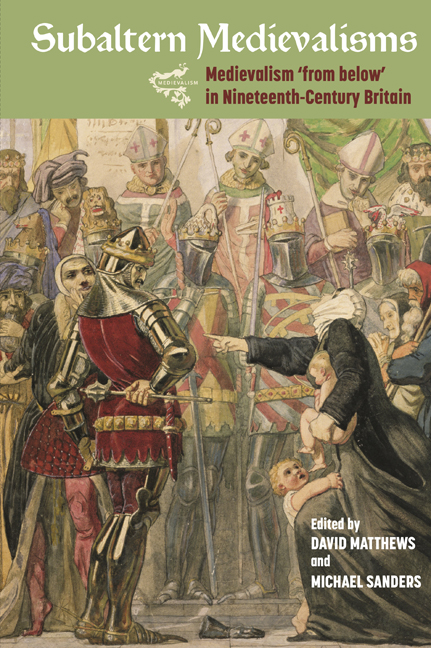Book contents
6 - Rousing ‘the Spirit of Wat Tyler’: Chartist Newspaper Portrayals of the Rebel Leader
Published online by Cambridge University Press: 09 February 2021
Summary
THE PEASANTS’ REVOLT of 1381 was an event which saw 50,000 rebels, led by Wat Tyler, John Ball and Jack Straw, march on London to demand an end to the hated poll tax, the abolition of serfdom and the freedom for all men to buy and sell in the marketplace. Despite the revolt's failure following the killing of Tyler by William Walworth, the Lord Mayor of London, Tyler went on to enjoy a post-medieval literary afterlife in English popular culture. Until the late eighteenth and early nineteenth centuries, Tyler was always depicted as the clear villain of the tale – a drunken lout who challenged his king – while Walworth's murder of him was held up as a noble act of patriotism. Scholars usually give credit to Thomas Paine and Robert Southey for rehabilitating Tyler's reputation, transforming him from a rebellious wretch into a heroic freedom fighter. Paine, in a footnote in The Rights of Man (1791), expressed his admiration for the rebel leader. Southey, the author of Wat Tyler, which was written in 1794 when he was a young radical and then printed to embarrass him in 1817 when he was an older conservative, portrayed Tyler as a medieval sans-culotte. However, as this chapter argues, scholars should be giving more credit to the Chartists for popularising Tyler and disseminating knowledge about the rebellion among the working classes.
It was for the purposes of rehabilitating Tyler's reputation, as the leader of the first large-scale popular movement, that Chartist writers began appropriating his story and publishing it in their newspapers such as The Northern Star, as well as those papers which were allied to the cause, such as The Odd Fellow. They did this by reprinting Southey's poem as well as publishing original poetical works and historical commentaries of the revolt. Pierce Egan the Younger (1814–80) represented Wat Tyler as someone who was essentially a medieval Chartist in a highly popular novel, although it is not the intention here to focus on this work, which has received attention from several scholars (see further Stephen Knight's essay in this volume).
- Type
- Chapter
- Information
- Subaltern MedievalismsMedievalism 'from below' in Nineteenth-Century Britain, pp. 110 - 124Publisher: Boydell & BrewerPrint publication year: 2021



